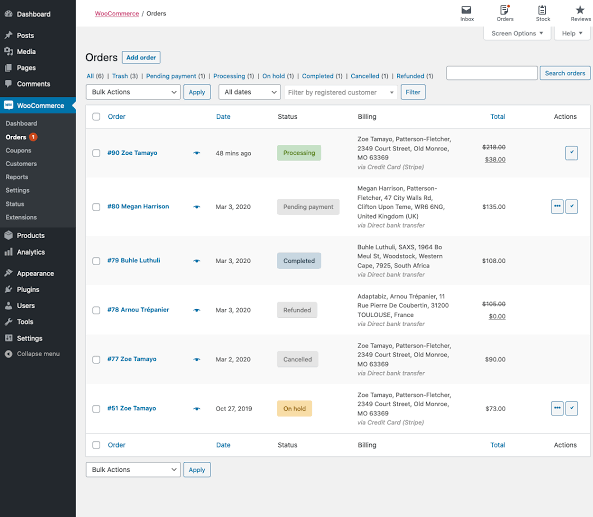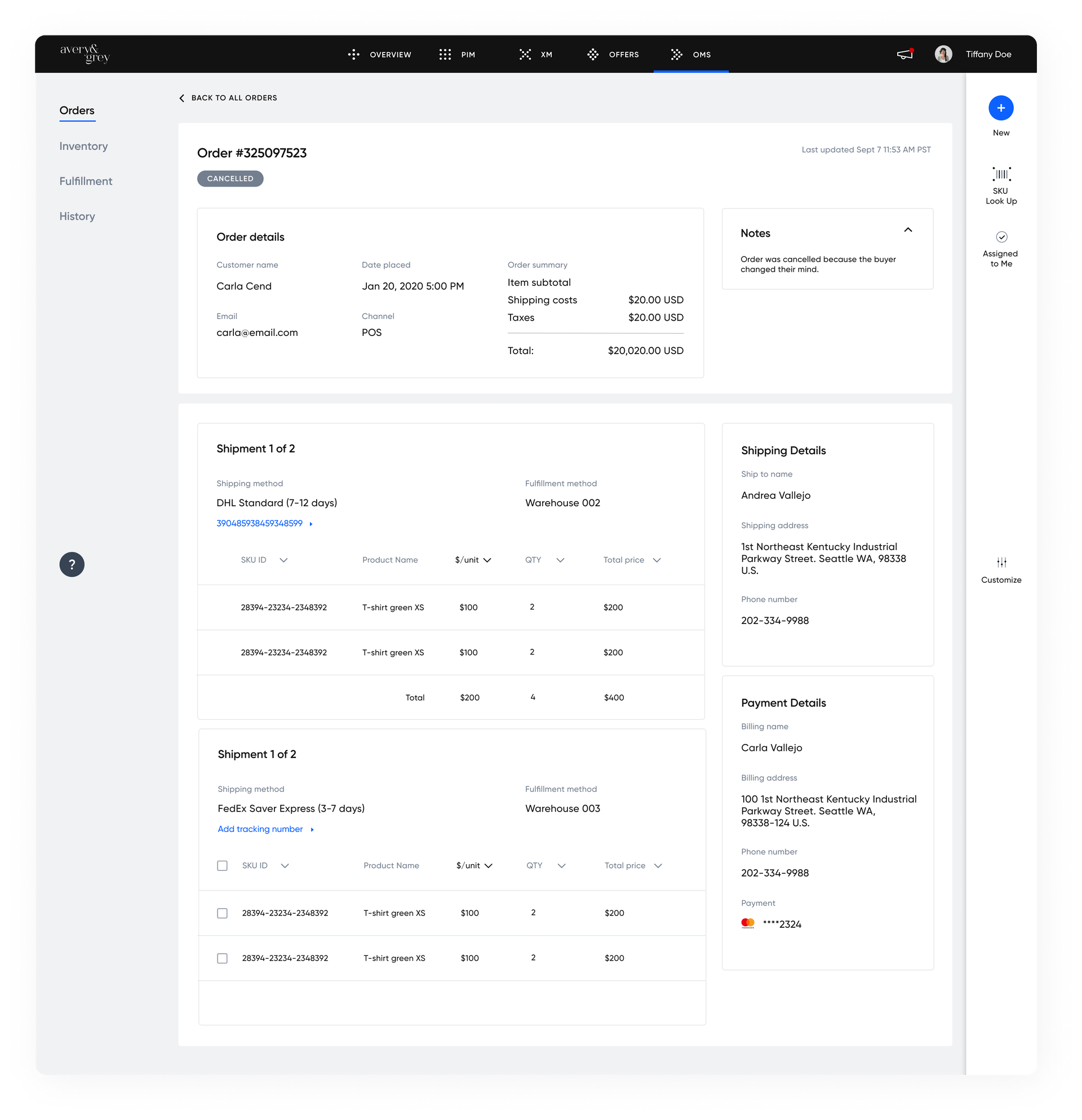What Is WooCommerce Order Management and WordPress Alternatives?

WooCommerce order management is part of the free WordPress plugin—WooCommerce—that lets store owners manage and fulfill their orders. Like other traditional order management system (OMS) software, the WooCommerce OMS dashboard lets you see everything that relates to an order, including the order number, name, date of sale, etc.
Automattic acquired WooCommerce in 2015 for $30 million. Currently, over 3 million websites are using WooCommerce. Data from BuiltWith also shows that WooCommerce boasts a 29% market share of the top 1 million websites using e-commerce technologies, putting it ahead of Magento and Shopify.
Nonetheless, modern alternatives to WooCommerce OMS that offer greater flexibility are taking the stage. Chief among them is headless commerce. Headless commerce provides solutions to WooCommerce order management limitations, such as scalability or late deliveries. With Amazon championing this new technology, it’s worth looking into.
[toc-embed headline=”WooCommerce Order Management Overview”]
WooCommerce Order Management Overview
Advantages of WooCommerce OMS
As the leader among traditional e-commerce platforms today, WooCommerce order management provides site owners with beyond-the-basics inventory, fulfillment, and necessary tools to enhance operations and stimulate growth. This lets brands and retailers focus on providing excellent customer service in one single place.

WooCommerce order management is free to everyone who downloaded the plugin and has a WordPress website. WordPress OMS has a user-friendly and less-confusing dashboard that’s easy to navigate from the WordPress dashboard; you access it with WooCommerce>order management. Like typical OMS software, WooCommerce displays the order status beginning with “pending payment” and ending with “completed.” It also shows other important statuses like:
- Pending payment
- Failed
- Canceled
- On-hold
- Refunded
- Processing
You can arrange orders by the order number, date, or total. In addition, the OMS dashboard has other options like automated tax calculations, live shipping rates, print labels at home, and a mobile app for iOS and Android users. The platform also allows multiple digital payment options. Overall, WooCommerce order management provides the tech stack every retailer needs to run a successful e-commerce business.
Disadvantages of WooCommerce OMS
WooCommerce OMS is great if a business operates with one channel and has good inventory visibility. But if you’re a business using multiple channels with a lot of products, WooCommerce order management doesn’t offer much flexibility.
WooCommerce needs a lot of plugins—at least 25—to function as a standalone OMS. Setting up each payment gateway also requires an extra plugin, each of which has its own configuration. Downloading these plugins can slow down a website’s speed as they take a lot of memory, and ultimately slows down the order fulfillment process. Furthermore, these plugins are expensive to maintain and make it harder to navigate the dashboard.
While WooCommerce OMS offers a user-friendly interface, it requires a lot of website development or WordPress experience to maximize its use. Additionally, its legacy system architecture makes it difficult to set up shipping solutions or connect with third-party logistics (3pl) companies.
[toc-embed headline=”WooCommerce OMS Alternatives”]
WooCommerce OMS Alternatives
There are a lot of alternatives to a business looking for something different from WooCommerce order management, including traditional e-commerce platforms and the modern headless commerce approach. Let’s examine the options to help decide which one is worth trying out.
Traditional alternatives to WooCommerce OMS
- Brightpearl is a retail platform that tightly integrates with all sales channels. Designed to handle peak trading, it integrates with the full retail tech ecosystem and provides real-time insights on order fulfillment, inventory management, and warehouse management. The major downside is its UI, which is challenging for new users.
- Skubana has some orderbot tools that automate the order management process, saving time and money. Its intuitive system makes it easier to navigate through the OMS and manages multiple orders and fulfillment. However, configuration for certain actions isn’t always streamlined and requires going back and forth for several days to get it right.
- Freestyle solutions is a tool for small to medium-sized companies. It helps to manage extensive inventory, customers, and orders with its vast customization options. However, its user interface is dated and the tool does not give complete customization features.
Modern alternatives to WooCommerce OMS
- Adobe Magento OMS helps businesses with multiple brands, sites, stores, warehouses, and distribution centers create a seamless cross-channel experience. It also handles complex order and fulfillment needs such as back-order and BOPIS. However, its expenses are only suitable for companies with bigger budgets.
- Fluent Commerce comes with a global inventory module, which lets professionals view and manage on-hand merchandise easily. However, Fluent Commerce is technical to use and does not provide enough documents to help you learn the basics.
- fabric OMS has a robust suite of e-commerce APIs that lets you connect with any 3pls or other services to collaborate more efficiently. With fabric OMS, you can automatically route orders to the best warehouse to ensure deliveries are as quick as possible.
[toc-embed headline=”Key Takeaways”]
 Key Takeaways
Key Takeaways
- WooCommerce order management is a functionality accessible via the WooCommerce WordPress plugin that lets store owners see everything that relates to an order, such as the order number, name, and date of sale.
- To make WooCommerce function like a standalone OMS, you’ll need to install a lot of plugins, slowing down the performance of your store as you add more products and operate from different channels.
- Alternatives including headless commerce OMS solve the issues of WooCommerce order management by offering greater flexibility.
- fabric OMS was designed to give customers the post-purchase experience expected from world-class retailers by improving inventory management, eliminating errors, and delivering products faster.

Tech advocate and writer @ fabric.
 Key Takeaways
Key Takeaways